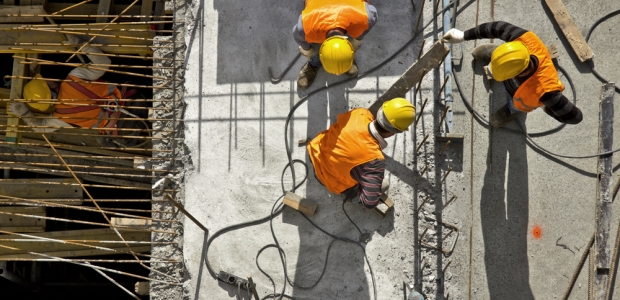
Proactive Safety Practices Pay Big Dividends, ABC Report Shows
The trade association's 2017 Safety Performance Report finds the impact of using proactive safety practices is to reduce recordable incidents by up to 87 percent.
Associated Builders and Contractors has released its 2017 Safety Performance Report, which reports that users of its Safety Training Evaluation Process, by using proactive safety practices, reduce recordable incidents by up to 87 percent -- making the best-performing companies 770 percent safer than the industry average.
"ABC's third annual report on the use of leading indicators, such as substance abuse programs and new hire safety orientations, confirms that high-performing ABC members have safer construction job sites," said ABC President and CEO Michael Bellaman. "This is one of the few studies of commercial and industrial construction firms doing real work on real projects, and it shows that implementing best practices can produce world-class construction safety programs."
The six core leading indicators identified in the report are having substance abuse programs, new hire safety orientation, site-specific safety orientation, toolbox talks, near miss/near hit analysis, and site safety committees.
The report is based on data gathered from ABC member companies recording more than one billion hours of work in construction, heavy construction, civil engineering, and specialty trades. It tracked 35 data points from ABC's 2016 STEP participants to determine the correlation between implementing leading indicator use and lagging indicator performance, which is measured by the Total Recordable Incident Rate and Days Away and Restricted or Transferred (DART) rate. STEP participant performance was compared against BLS industry average incidence rates.
Companies at the highest level of STEP participation, Diamond, reduced their TRIR by 87 percent compared to the BLS industry average of 3.5 injuries/fatalities per 100 full-time employees, while participants with a robust substance abuse program/policy in place "dramatically outperformed those with a weaker program, reducing their TRIR and DART rates by 36 percent," according to ABC. It reported companies that conduct new hire safety orientation lasting more than 200 minutes reduced incident rates by 94 percent versus those with an orientation of 30 minutes, and that companies that held site-specific safety orientations reduced their TRIR by 45 percent and those holding daily toolbox talks reduced TRIR rates by 64 percent, versus holding them monthly.